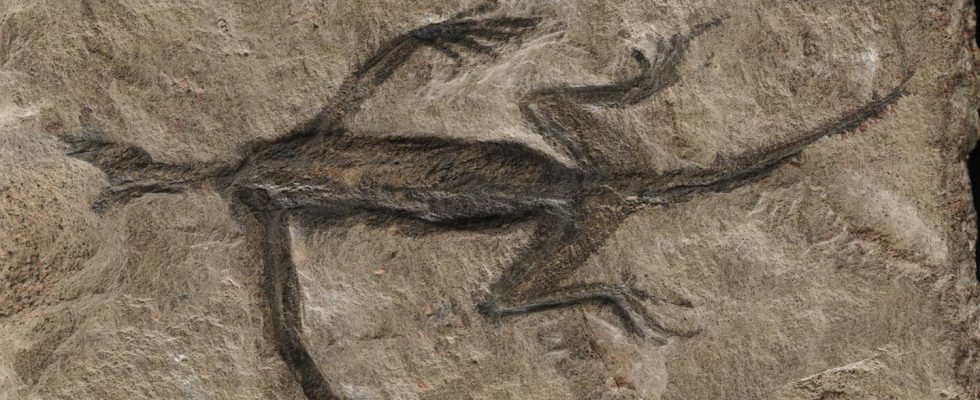Black color
Million-year-old reptile fossil turns out to be a painting
Famous – but apparently partly faked: Tridentinosaurus antiquus
© Valentina Rossi
The special state of preservation of a 280-million-year-old fossil from the Italian Alps has always caused astonishment among researchers in the past. Now the mysterious creature revealed its secret.
The body stands out darkly on the light rock – the legs, tail and body of the lizard-shaped figure are clearly visible. With its appearance and numerous details, the reptile, which was found in the Italian Alps in 1931, captivates researchers and viewers alike. Alone: Tridentinosaurus antiquus – the scientific name of the petrified creature – is apparently partly a fake, as researchers led by Valentina Rossi from University College Cork, Ireland, report in the journal “Paleontology”. This was helped with: black paint.
The seemingly good condition of the fossil and its special coloring were interpreted by researchers in the past as preserved soft tissue. “Fossil soft tissues are rare, but when found in a fossil they can reveal important biological information, for example about external coloration, internal anatomy and physiology,” says paleobiologist Valentina Rossi according to a statement from the university. The apparently petrified skin of Tridentinosaurus antiquus has been described in articles and books, but apparently never examined in detail.
No petrified skin, just color
Rossi and her team examined the fossil using a microscope and special UV photography and were surprised: it turned out that the texture and composition did not match those of real fossilized soft parts. Instead, the researchers found evidence that the fossil’s body outline was painted on, presumably to improve its appearance. “The particularly good preservation of the Tridentinosaurus puzzled experts for decades,” co-author Evelyn Kustatscher is quoted in the statement. “It all makes sense now. What was described as carbonized skin is just paint.”
It also turned out that the sample examined had apparently been treated with some kind of coating material. However, coating fossils with certain varnishes was quite common in the past – the process is still sometimes used today.
After all – and this is the good news alongside the bad: the fossil is not completely fake. The bones of the hind legs, especially the thigh bones, are most likely real, although poorly preserved. Using the new analyses, the researchers were also able to detect tiny bone scales, so-called osteoderms, on the animal’s back.
Tridentinosaurus antiquus was considered an important specimen for understanding early reptile development. However, researchers also puzzled over its geological origins and its membership in a specific group of reptiles. “The answer to all of our questions was right in front of us,” said Valentina Rossi. “We had to study this fossil in detail to uncover its secrets – even ones we might not want to know.”

